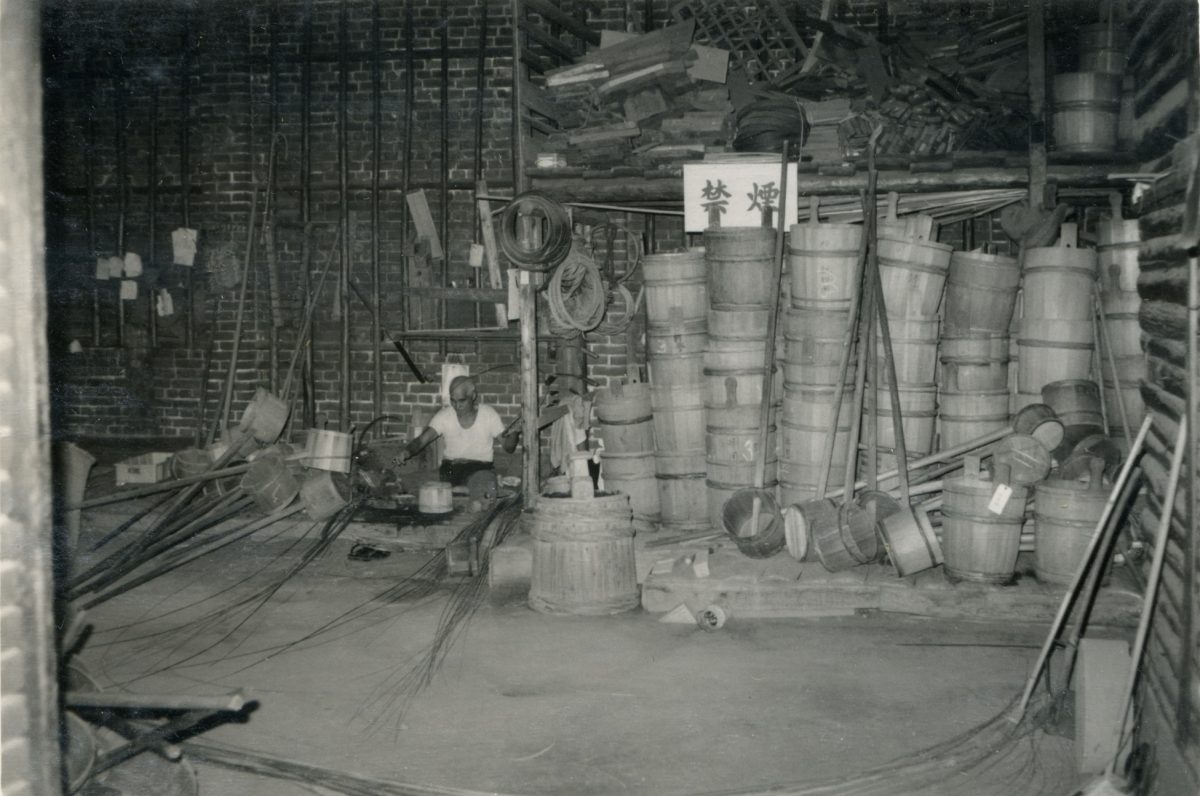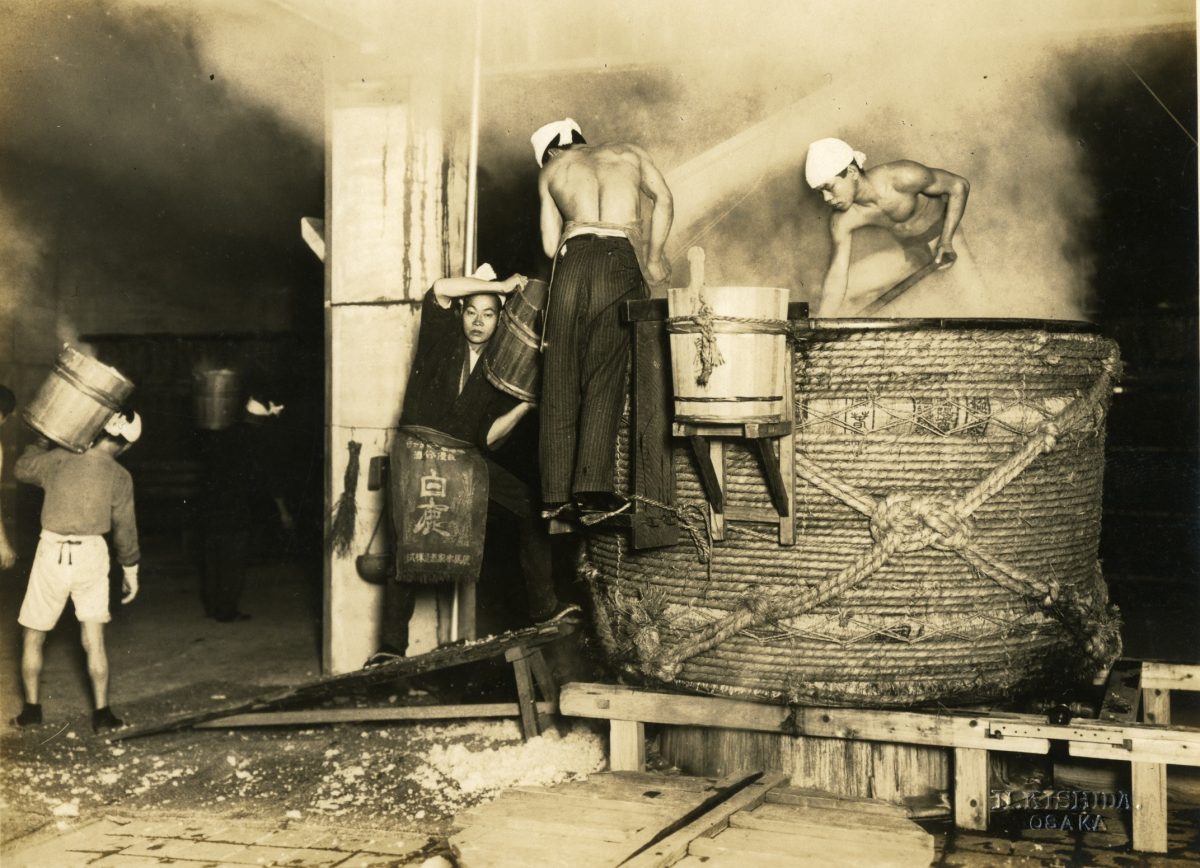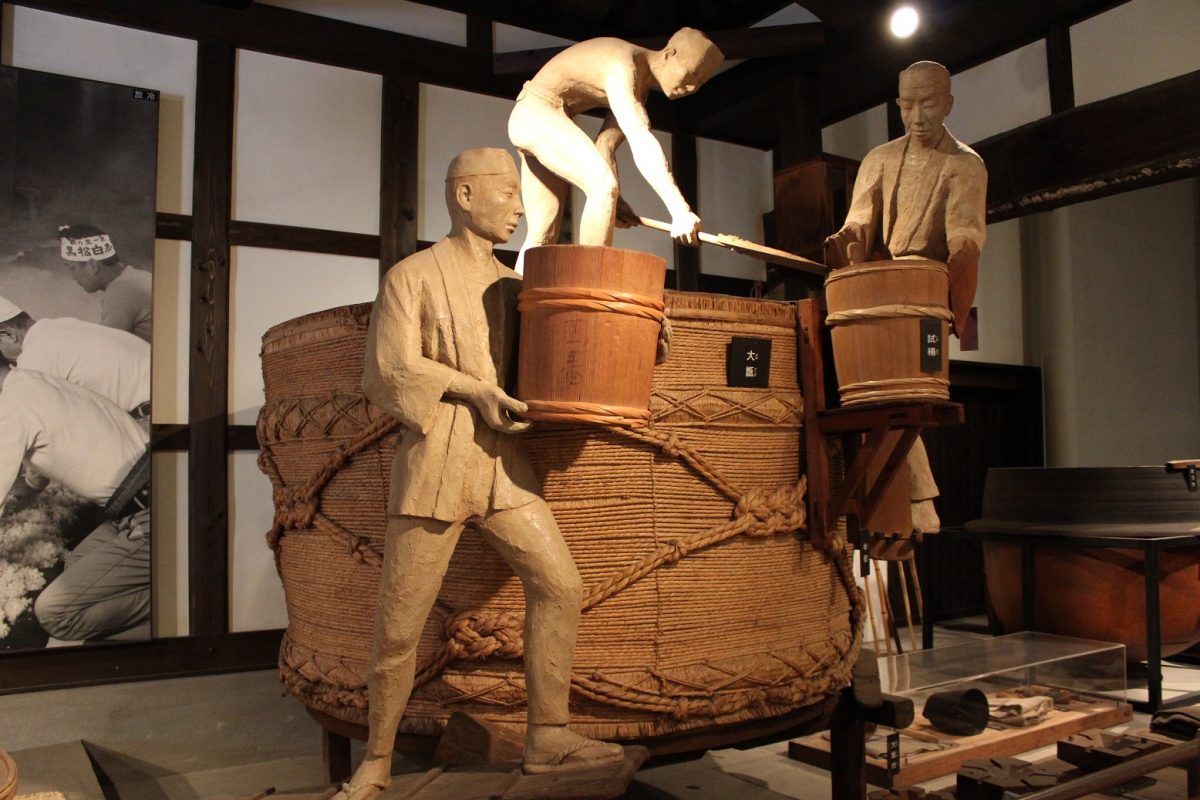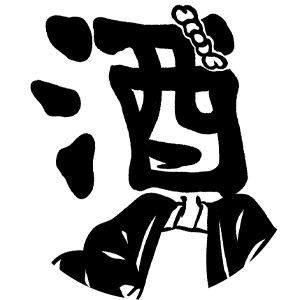The rainy season in Japan is coming to an end, and as the temperature rises, we know that summer is coming soon!
In this post, we would like to introduce various sake brewing tools that were accredited as cultural properties of Japan Heritage. At Sakagura-kan, one of the two buildings of the sake museum, there are over 200 wooden sake brewing tools in various sizes exhibited to display the entire process of traditional sake brewing. The exhibited tools were actually used by Tatsuuma-Honke Brewing until the 1960s. These tools are thought to have been made by the tub craftsmen who had business with the company.

Let us introduce some of the tools. The first tool is a large vat called “ōoke”, the largest tool of the collection. The large vats were used for making moromi (moromi = fermentation mash) and for storing sake. The vat is approx. 2 meters high and a diameter of approx. 2.3 meters. It can store around 30 koku (1 koku = approx. 180 liters) or 5,400 liters of sake, which are equal to 3,000 of 1.8L size bottles. As explained in prior articles, this area called Nadagogo is Japan’s largest sake brewing region and large tools such as these were needed to meet the demand for sake. In those days, several dozens of the large vats were equipped per brewery building in this region. It must have been amazing to see the breweries at that time. At the museum, 9 large vats are currently exhibited, and museum visitors can walk into one of these vats and take photographs! Please visit the museum to experience the actual size.
The second tool is a rice steaming vat called “koshiki”. Rice was poured into the steaming vat after being washed and soaked in water for absorption. Then the vat was placed onto an iron pot where the rice was steamed. Once the water in the iron pot was boiling, the steam from the boiling water rose into the vat through the holes at the bottom to steam the rice. The vat is covered by straw mats and tied with ropes to keep the steamed rice warm.
The last tool is a uniquely shaped tub called “kitsune oke”. It was formed in this shape in order to pour the fermentation mash into bags for pressing sake. Kitsune means fox in Japanese, and the tub was called kitsune because its shape resembles the face of a fox. There are many other tools with unique names, such as cat, sparrow, swallow, frog, udon noodle maker (udonya), shoe and bib. It is fun to explore the museum and find tools with unique names and learn about how they were used.

Please visit the museum to explore the world of traditional sake brewing!









Indeed, Edo period was the time of rice.